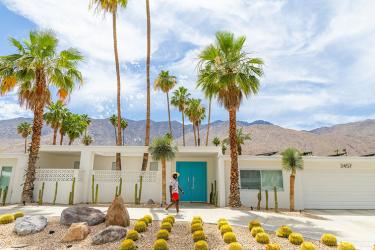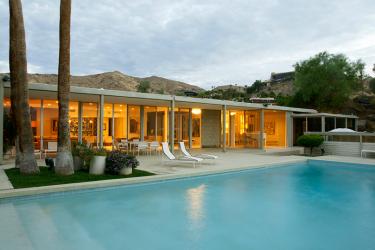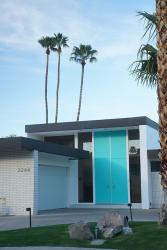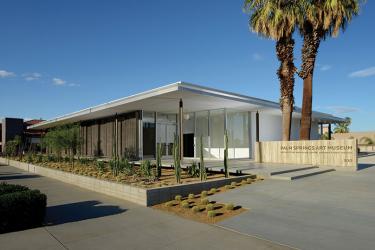Palm Springs, California evokes mental images of sunshine, palm trees and a fabulous array of mid-century modern architecture. In the middle years of the 20th century, this resort town for the rich and famous took on a new look that remains today. During the 1950s and 1960s, moneyed clients encouraged modernist architects’ use of new, post-World War II technologies in designing daring looks for their seasonal homes.
With its proximity to Los Angeles, warm weather and relative remoteness in the 1930s, Palm Springs became popular with Hollywood elites. After World War II, talented architects drawn to the Sonoran Desert began to experiment with inventive materials and adapted their designs to connect indoor and outdoor spaces, showcase the desert’s beauty and evoke a lifestyle of simple elegance. This design style began to be called Desert Modernism.
Many Desert Modern buildings have four common attributes: simple lines and cantilever roofs extending past the envelope of the house to provide ample shade from the desert sun; clerestory windows extending to the ceiling to maximize light without sacrificing privacy; brise soleil, an architectural feature of pieced concrete block or a decorative screen, used to deflect sunlight and reduce heat gain while also shielding the indoors for privacy; and patterned brick/shadow block walls with raised or embossed surfaces. Because Palm Springs was a resort community, homeowners were more willing to experiment with daring designs, and architects took advantage of the free rein.
Architect Donald Wexler experimented with steel framing and is known for his work at the Palm Springs International Airport, Royal Hawaiian Estates and the residence of Dinah Shore. E. Stewart Williams designed the Palm Springs Art Museum, Palm Springs Aerial Tramway Mountain Station, the Edris House and the residence of Frank Sinatra. High-end attributes were also used in mass-produced homes in Palm Springs and throughout the Southwest. Architect William Krisel designed over 2,000 homes in Palm Springs, including the Alexander Construction Company tract developments of Twin Palms Estates, Las Palmas Estates and Racquet Club Road Estates. Another notable architect, Albert Frey, designed the indoor-outdoor sensibilities of City Hall, Fire Station No. 1, the Movie Colony Hotel and numerous homes.
Palm Springs celebrates the design style during Modernism Week every February with special architecture tours, events and programs. The average daily high temperature of 75 degrees makes a February visit ideal for outdoor pursuits such as golfing, hiking and biking. The rest of the year, several organizations offer regular tours of Desert Modernism architecture, with modes of transportation ranging from small buses to walking to bike tours. A highly rated offering is Palm Springs Mod Squad, operated by local mid-century modern expert Kurt Cyr, who offers a tour with access to the interiors of several locally owned houses. And when all these groovy homes move you to shop for the perfect breezy caftan or retro lamp, the Uptown Design District is a great place to start combing through vintage consignment stores and antique malls.











